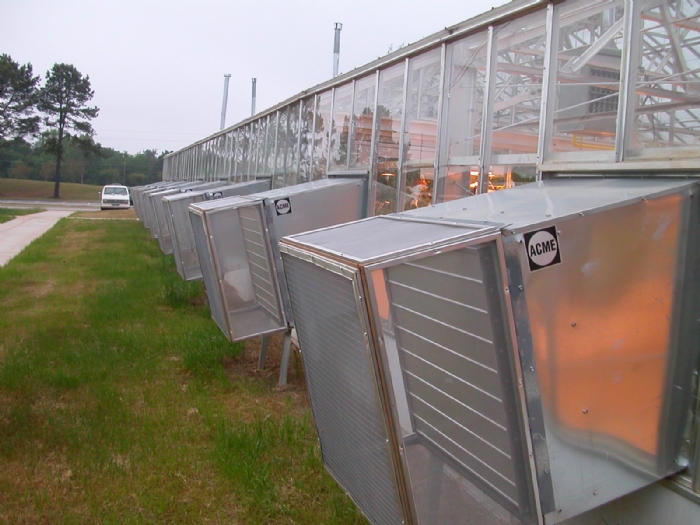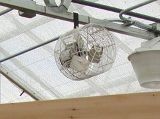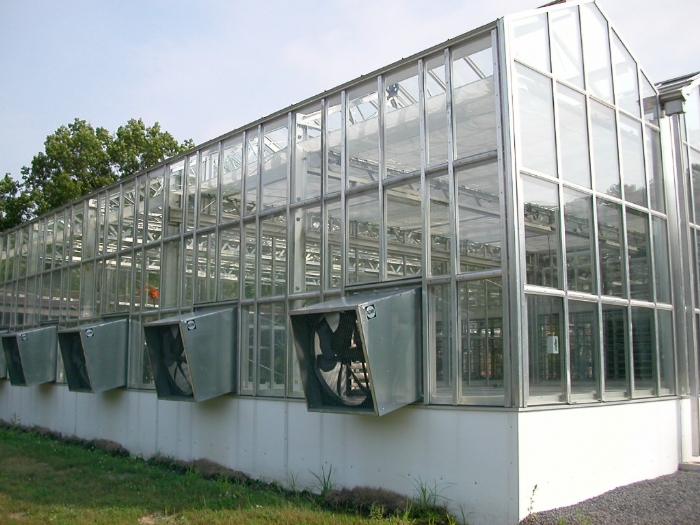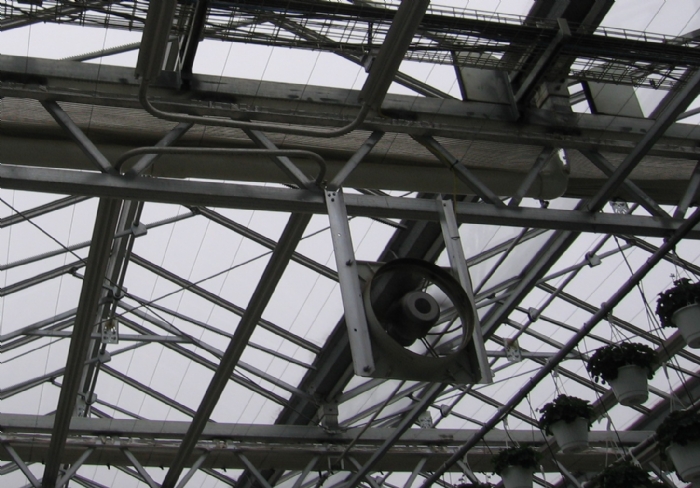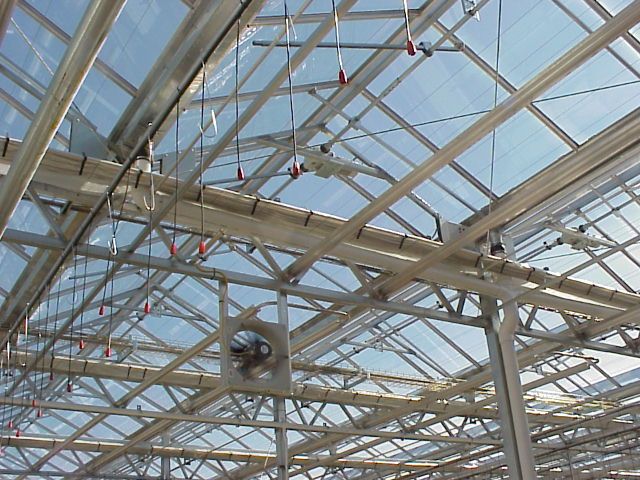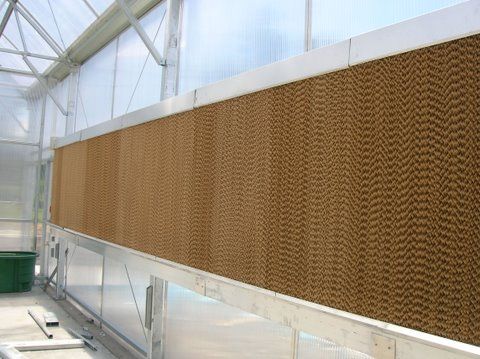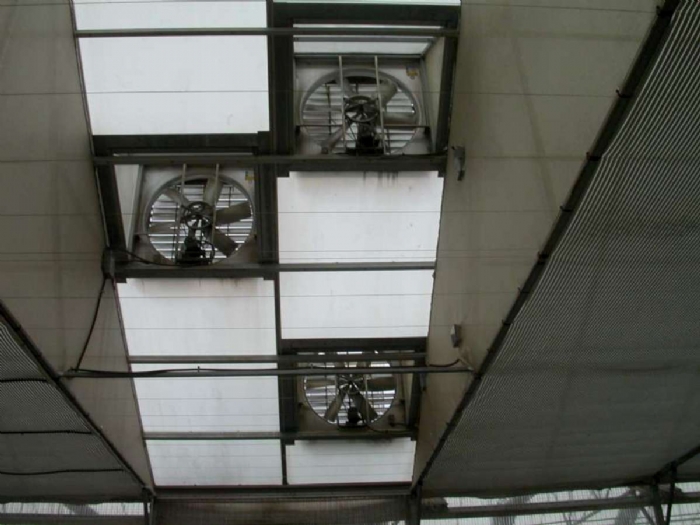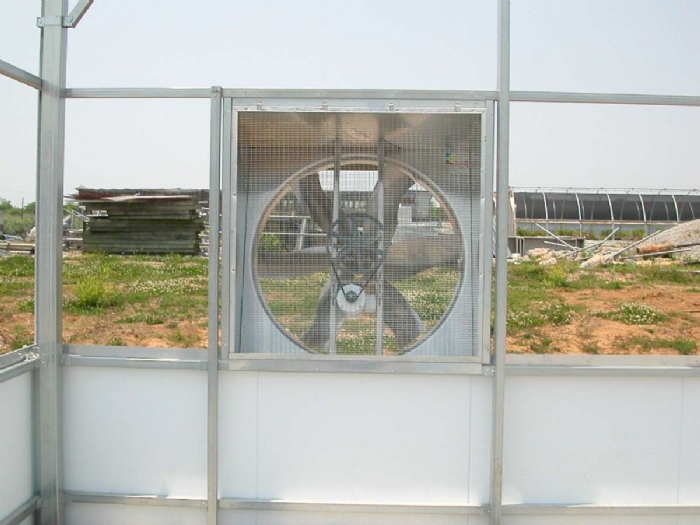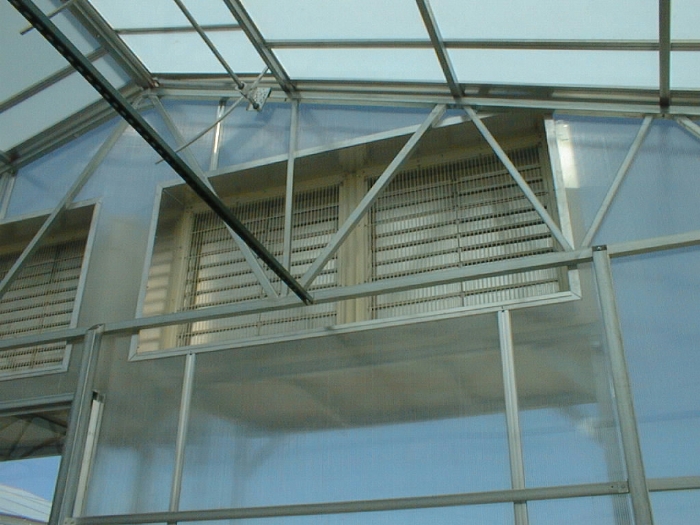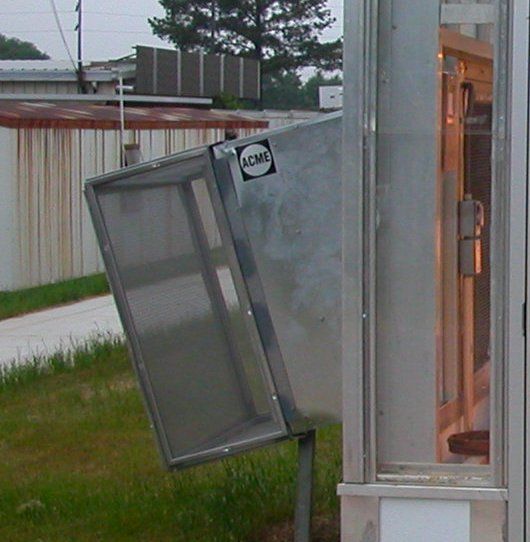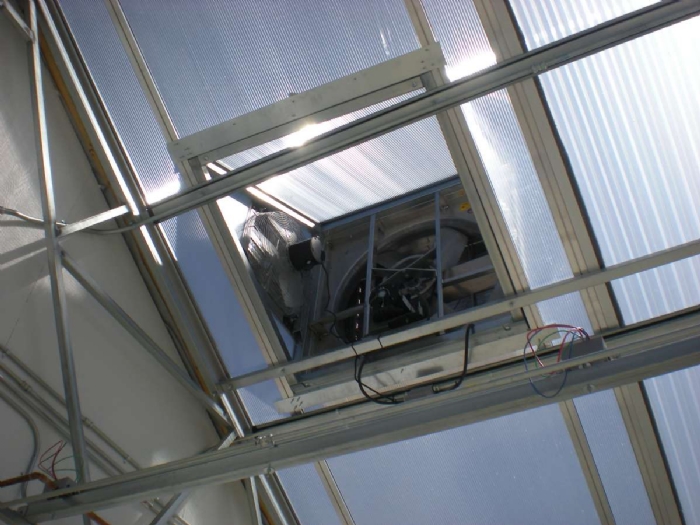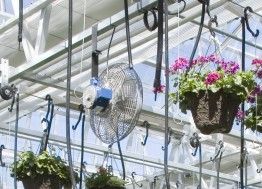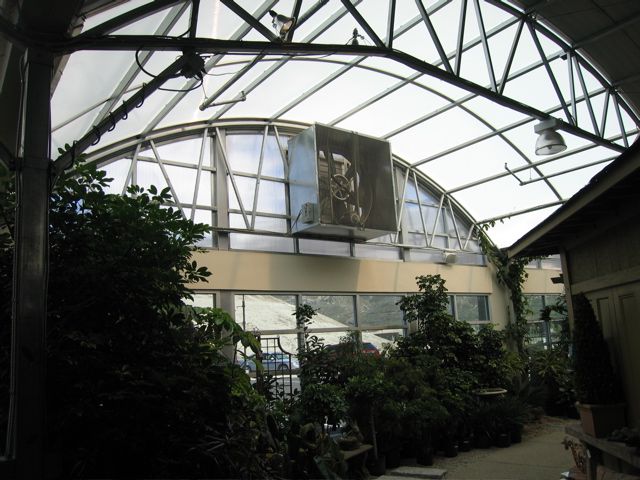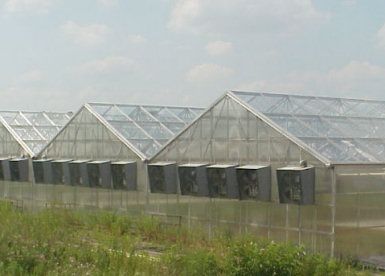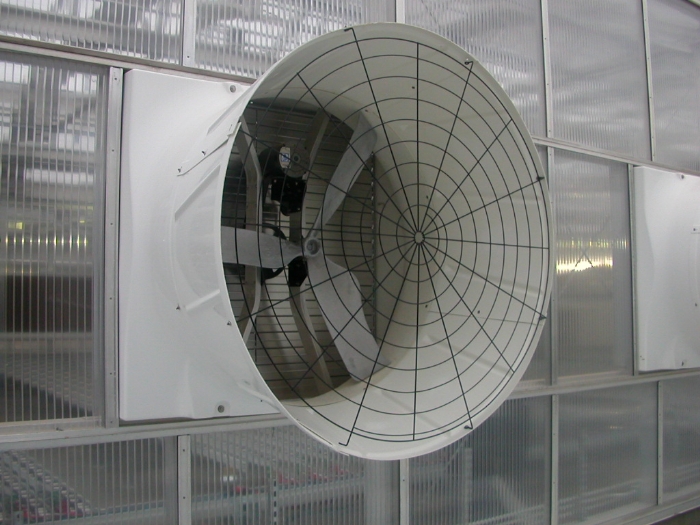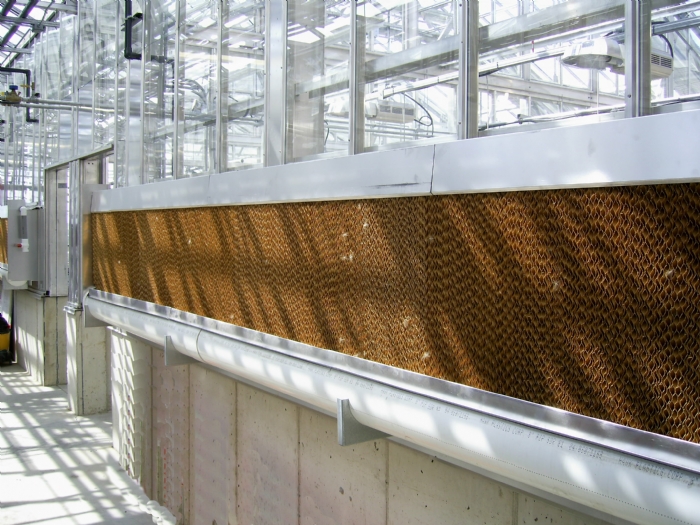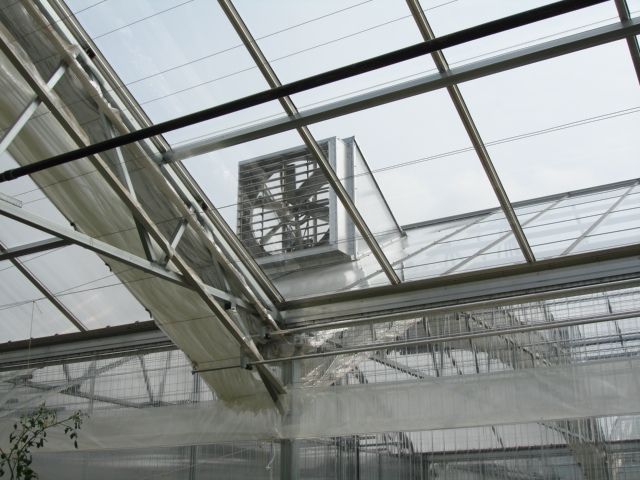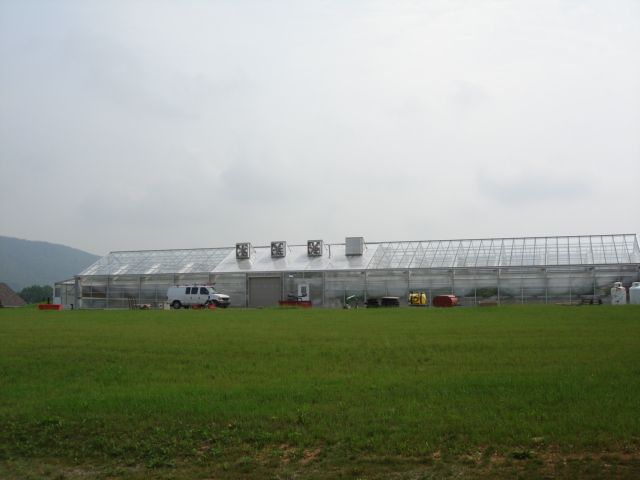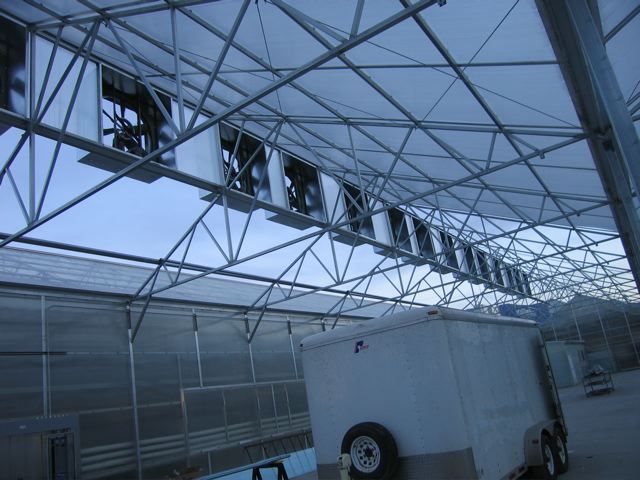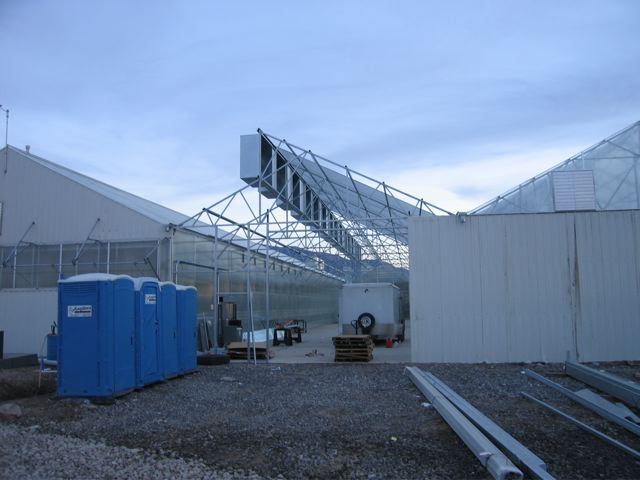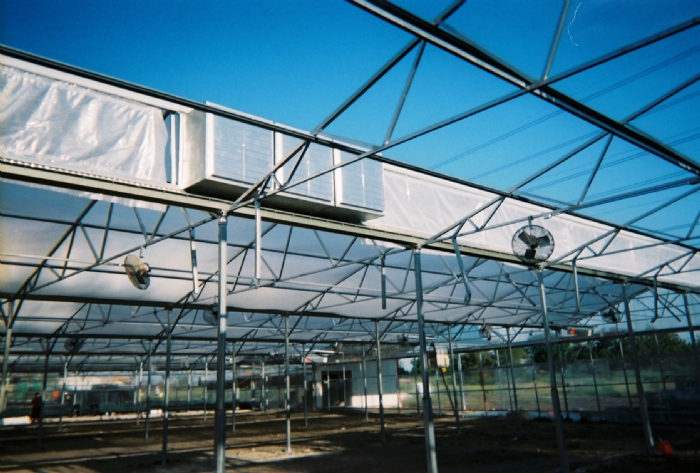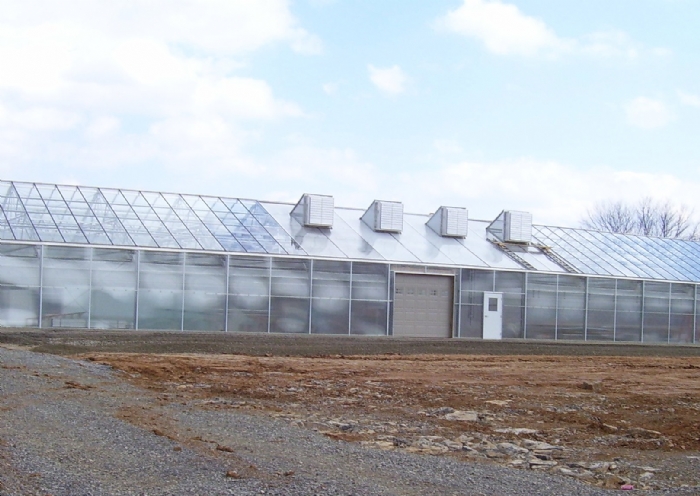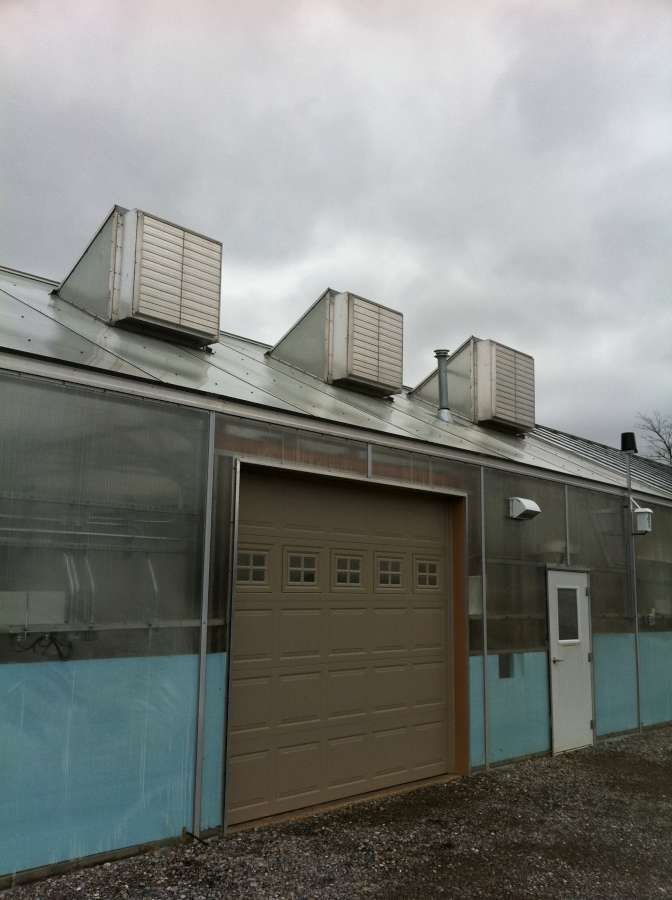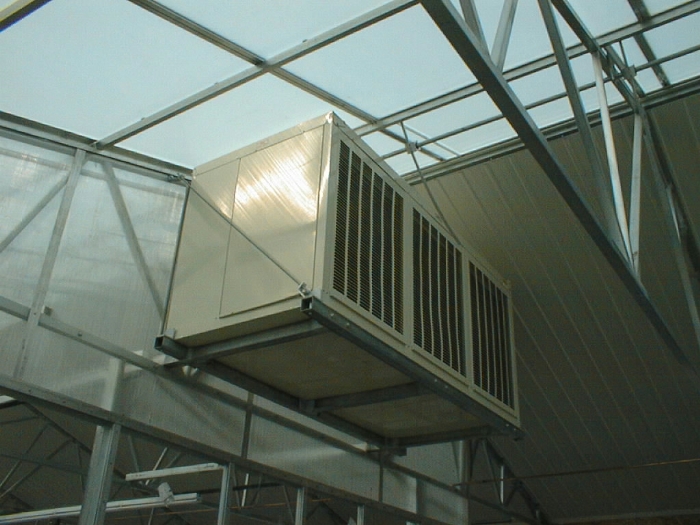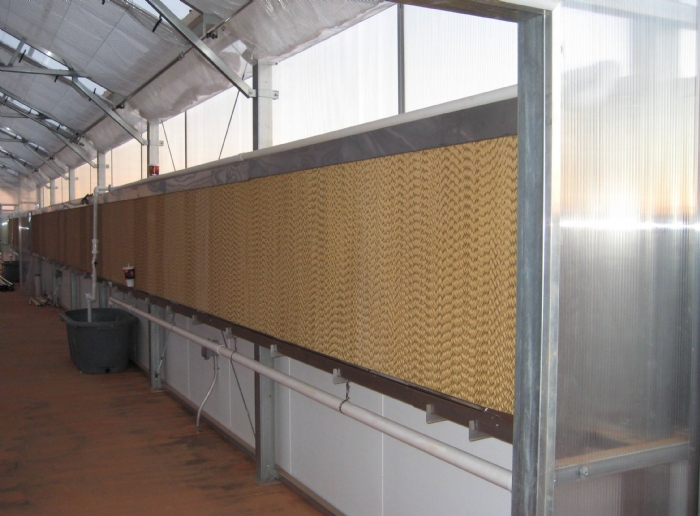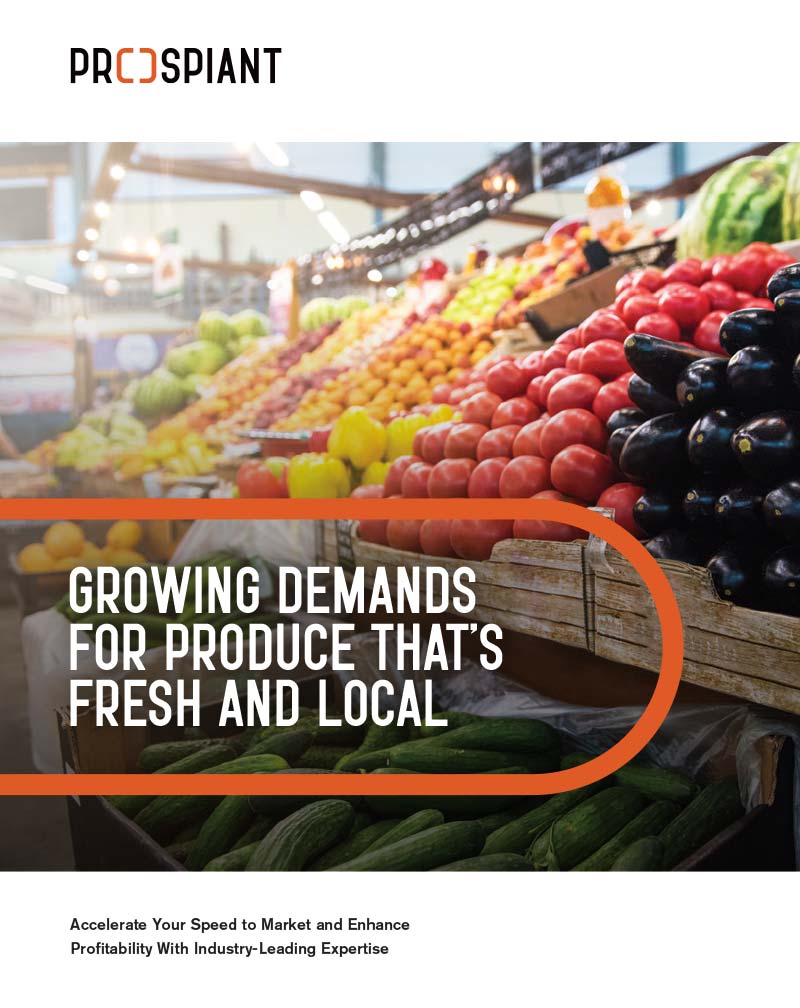A mechanical or active greenhouse ventilation system is the way to go when you need consistent airflow and more cooling than natural greenhouse ventilation can provide.
At its simplest, an active ventilation and cooling system uses power-driven equipment, such as fans, evaporative coolers, and other types of air conditioning to create airflow and circulation and lower greenhouse temperatures.
Compared to passive greenhouse ventilation relying on natural air movement and no electricity, monthly operating costs for a mechanical greenhouse ventilation system can run higher.
However, you are assured consistent airflow throughout the year that isn’t totally dependent on outside weather conditions.
In response to climate change challenges that can make passive (natural ventilation) growing difficult, our Grand Teton greenhouse stands out as a great option for growers who prefer a pad-wall and fan approach to cultivation.
Our Vail greenhouse and the Columbine greenhouse also accommodate mechanical ventilation.
Types of Commercial Greenhouse Ventilation Systems Using Mechanical Cooling
Mechanical greenhouse ventilation systems almost always involve some type of fan-assisted ventilation to provide consistent airflow and air exchange. Typically, fans work in conjunction with intake and exhaust vents to move air across the greenhouse.
- Fan and pad cooling creates an evaporative cooling effect when exhaust fans and vents draw warm air from outside the greenhouse through a wet wall that cools the air as it passes through it to lower temperatures inside the greenhouse.
- Fog (Mist) systems use a high-pressure pump to atomize water and spray a fine mist through nozzles placed throughout the greenhouse to increase humidity and cool the air.
- Swamp coolers, also known as single-unit evaporative cooling systems, operate similarly to fan-and-pad cooling but they are self-contained and typically used for smaller, freestanding greenhouses.
More on Fan-and-Pad Cooling
Fan and pad cooling works most effectively when the outside air has low humidity because evaporative cooling works based on differences between outdoor and indoor conditions.
Here’s a quick rundown on how fan and pad systems use evaporation to cool the greenhouse:
- Exhaust fans and open vents on one side of a greenhouse create a vacuum effect that draws warm outside air into the greenhouse and through a wet wall located on the opposite end.
- As the warm air passes through the wet wall, the air begins to cool as it loses heat and gains moisture.
- The cooled air leaving the wet wall spreads out across the greenhouse, cooling the temperature and raising the humidity level as it goes.
In more humid conditions, you can still use fan and pad cooling, but it is essential to know that the cooling effectiveness might not match that of drier conditions.
You can also reduce the efficiency of fan and pad systems if you don’t properly size them for your greenhouse, and if you don’t keep them in good condition with regular maintenance.
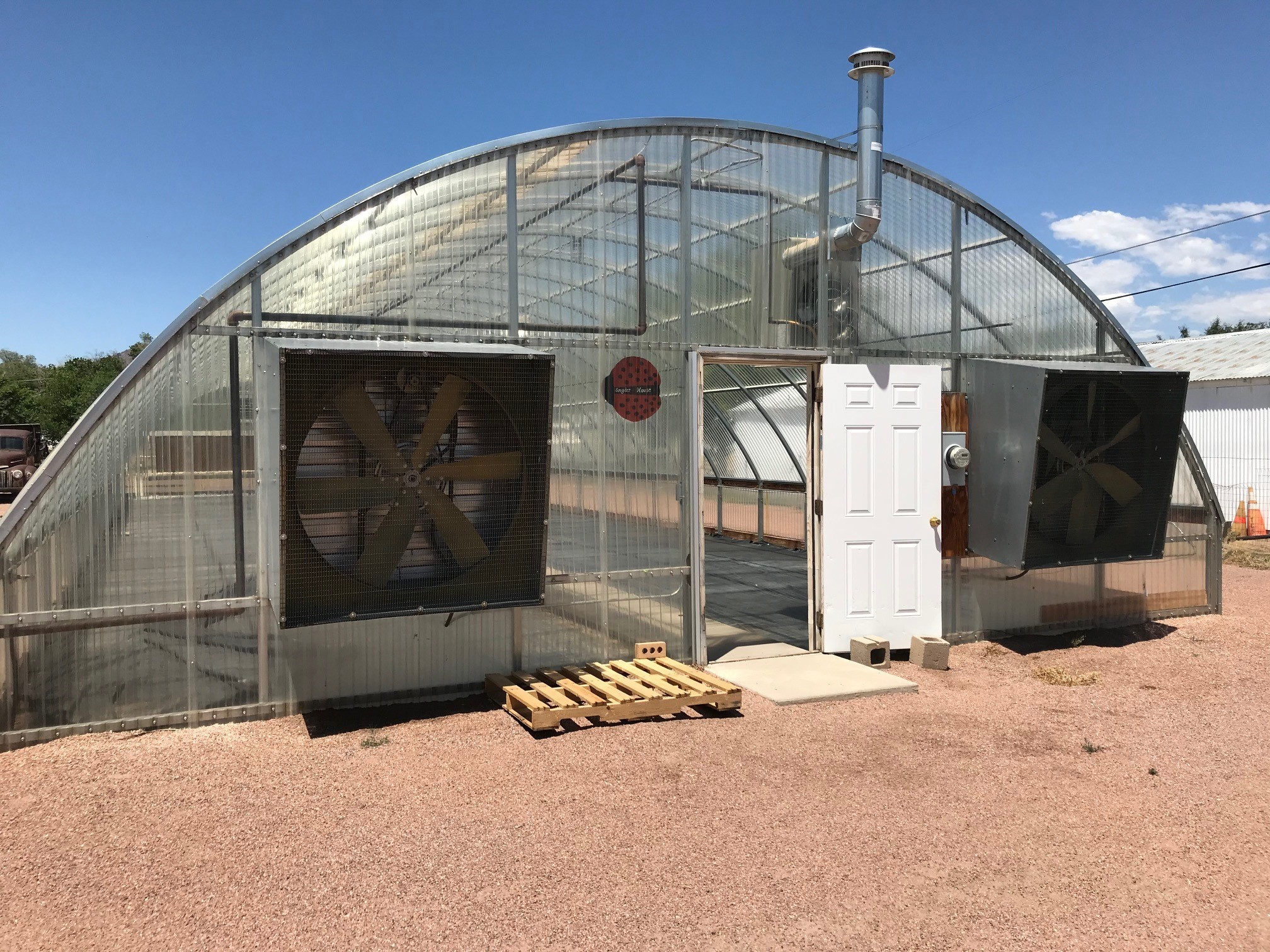
Advantages of a Mechanical Greenhouse Ventilation System
Whether used in conjunction with a natural ventilation and cooling system in a greenhouse or on its own, mechanical ventilation systems offer many benefits:
- Provide consistent airflow and air exchange
- Decrease temperatures/increase humidity levels to reduce moisture loss in plants
- Well-suited for growing in hot, dry areas
- Suitable for closed greenhouse environments
- Offer precise control
- Prevent drafts around the greenhouse perimeter
- Adapt easily to automation
- Benefit growers with strict delivery deadlines
- Prove less labor-intensive than natural ventilation
Take the guesswork out of commercial greenhouse ventilation systems and cooling with Prospiant.
We design, build, and recommend ventilation and cooling set-ups that seamlessly integrate with your other greenhouse systems for optimal crop conditions. Reach out today!

Commercial Brochure
Overview of our greenhouses in public gardens, retail garden centers, schools, universities, and research institutions.
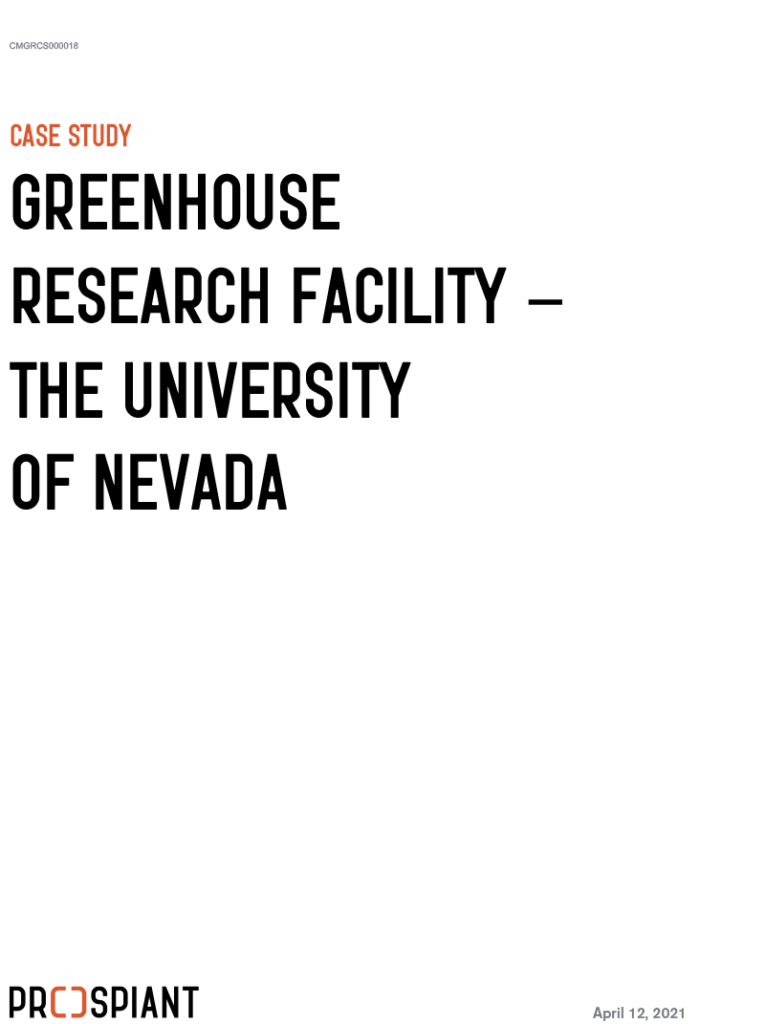
Case Study: Greenhouse Research Facility – The University of Nevada
Read about our new University of Nevada, Reno, Greenhouse Research Facility.
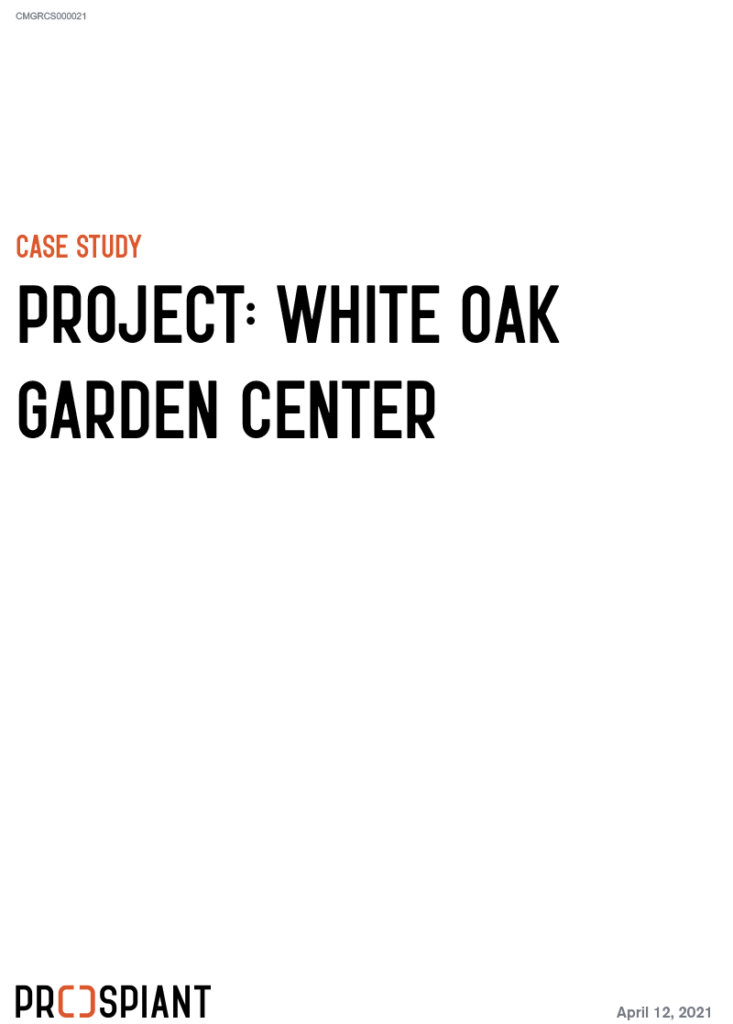
Case Study: White Oak Garden Center
Read our case study on the White Oak Garden Center in Cincinnati, OH
Product Gallery


